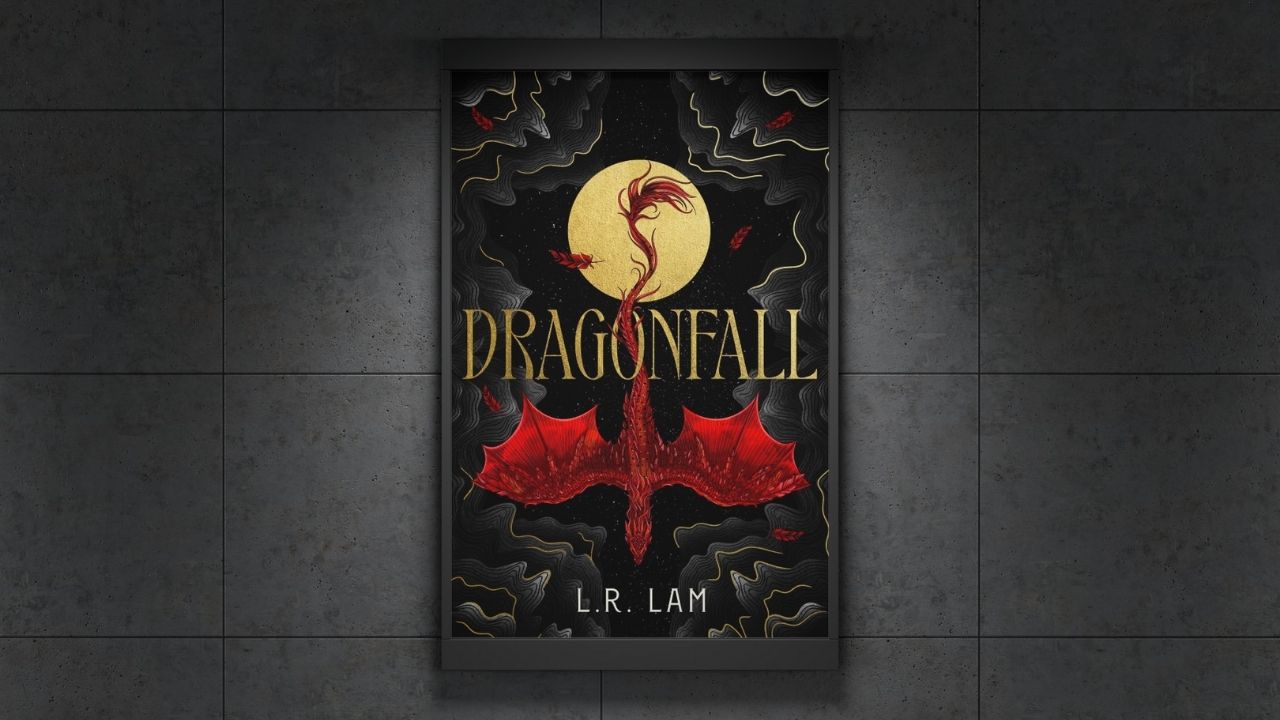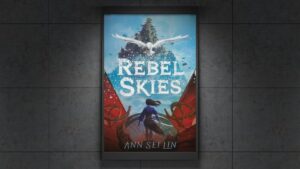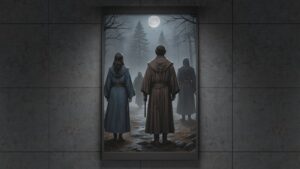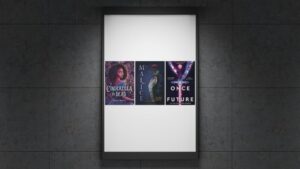Dragons have long held a unique place in the realm of fantasy literature, embodying both the awe-inspiring and the otherworldly. As guardians of treasure, harbingers of destruction, or wise sages, their roles often reflect humanity’s greatest fears and aspirations. From the fire-breathing beasts of European folklore to the benevolent serpents of Eastern mythologies, dragons have become one of the most versatile and enduring symbols in storytelling.
In recent decades, a remarkable shift has taken place in fantasy literature. Storytellers have begun weaving more inclusive narratives, reflecting the diversity of the modern world. Central to this transformation is the growing representation of LGBTQIA+ characters, themes, and experiences. This inclusivity has extended beyond human characters to encompass fantastical creatures, including dragons.
Exploring LGBTQIA+ dragons in fantasy literature is significant for several reasons. First, it underscores the genre’s ability to challenge traditional boundaries and embrace new perspectives. Second, it offers readers a fresh lens to understand themes of identity, transformation, and acceptance. Lastly, these stories provide representation for marginalized communities in a way that feels both empowering and resonant. Dragons, with their capacity for reinvention and symbolism, are the perfect medium to explore these ideas, making them a compelling subject in the evolving tapestry of modern fantasy.
Historical Context of Dragons in Fantasy
Dragons are among the most ancient and enduring symbols in human storytelling, with roots in the mythology and folklore of cultures around the world. Traditionally, dragons have been portrayed as powerful, enigmatic beings, often embodying humanity’s greatest fears and desires.
In Western mythology, dragons are frequently depicted as monstrous creatures guarding vast treasures, representing greed, chaos, or an ultimate challenge for heroes to overcome. Legends such as those of Saint George and the Dragon or the Norse Fáfnir emphasize themes of conquest, bravery, and morality, with the dragon often serving as a symbol of humanity’s internal and external struggles.
Conversely, in Eastern traditions, dragons are often revered as benevolent and wise, symbolizing prosperity, strength, and harmony with nature. Chinese and Japanese dragon lore portrays these creatures as celestial beings connected to water and weather, embodying balance and good fortune rather than destruction.
When fantasy literature began to formalize as a genre in the late 19th and early 20th centuries, dragons naturally became prominent fixtures. Works like J.R.R. Tolkien’s The Hobbit and C.S. Lewis’s The Chronicles of Narnia cemented the dragon’s role as a formidable antagonist or transformative figure. However, these early portrayals reflected the societal norms of their time, with dragons often adhering to rigid archetypes that paralleled human binaries of good versus evil, masculine versus feminine, or civilization versus wilderness.
These traditional representations provided fertile ground for fantasy writers but often lacked nuance or space for diverse interpretations. Dragons were powerful symbols, yet their roles were confined to reinforcing prevailing societal structures and values.
As fantasy literature evolved, so too did the portrayal of dragons. Writers began to explore these mythical creatures with greater complexity, using them as tools to challenge norms rather than merely uphold them. This shift laid the groundwork for the emergence of dragons that could embody themes of fluidity, identity, and transformation—characteristics that align deeply with LGBTQIA+ narratives and make modern fantasy a rich landscape for inclusive storytelling.
Dragons as Metaphors for Otherness
Dragons have long been portrayed as the ultimate “other” in literature, representing forces that lie beyond human understanding or control. Whether as fearsome adversaries, wise protectors, or elusive beings dwelling on the fringes of human civilization, dragons symbolize the unknown and the misunderstood. This symbolic role makes them an ideal metaphor for exploring themes of identity, marginalization, and transformation.
In many traditional narratives, dragons exist outside the boundaries of human society, inhabiting remote caves, mountain peaks, or deep oceans. Their isolation mirrors the experiences of individuals or groups who feel excluded or alienated from mainstream culture. Just as dragons are often misunderstood or feared for their power and difference, so too are those who navigate life outside societal norms, particularly individuals within the LGBTQIA+ community.
Furthermore, dragons frequently undergo or provoke transformations in the stories they inhabit. Heroes who confront dragons often emerge changed, stronger, or more self-aware, a narrative arc that resonates with journeys of self-discovery and acceptance. For LGBTQIA+ individuals, the dragon’s transformative power can serve as a metaphor for embracing one’s identity, overcoming societal prejudices, and finding empowerment in difference.
The fluid and multifaceted nature of dragons also aligns with themes of non-conformity and fluid identities. In modern fantasy, dragons are often depicted with abilities to shapeshift, transcend gender, or embody multiple roles—qualities that challenge rigid binaries and highlight the complexity of existence. This makes them powerful symbols for breaking free from restrictive labels and embracing the beauty of diversity.
By embodying “otherness,” dragons not only enrich the narratives they inhabit but also provide a lens for readers to empathize with and understand marginalized experiences. Their symbolism fosters a deeper exploration of identity and encourages acceptance of what lies outside the ordinary. In the context of LGBTQIA+ representation, dragons serve as a reminder that difference is not a weakness to be feared but a strength to be celebrated.
Emergence of LGBTQIA+ Themes in Modern Fantasy
The fantasy genre has undergone a significant transformation in recent decades, moving beyond its traditional roots to embrace a more inclusive and diverse array of narratives. This shift reflects broader societal changes as storytellers and readers alike seek representation that resonates with their experiences and values. LGBTQIA+ themes have become an integral part of this evolution, enriching modern fantasy by expanding its scope and deepening its emotional and cultural resonance.
Historically, mainstream fantasy often conformed to heteronormative and patriarchal norms, with limited space for diverse identities or perspectives. However, as the genre matured, writers began to challenge these conventions, creating stories that explore a wider range of human (and non-human) experiences. This inclusivity has led to the portrayal of LGBTQIA+ characters, relationships, and themes not as peripheral elements but as central to the narrative.
The inclusion of LGBTQIA+ themes has brought new dimensions to character development and world-building. For instance, characters with non-traditional gender identities or sexual orientations often face unique struggles and triumphs, which can add complexity and depth to their arcs. These stories frequently explore themes of acceptance, self-discovery, and the celebration of diversity, resonating with readers from all walks of life.
Examples of LGBTQIA+ representation in modern fantasy are numerous and growing. In The Priory of the Orange Tree by Samantha Shannon, for instance, same-sex relationships are seamlessly woven into a sprawling epic about dragons, power, and destiny, challenging traditional notions of love and heroism. Similarly, N.K. Jemisin’s The Broken Earth trilogy incorporates themes of identity and queerness in its exploration of societal structures and personal transformation.
Beyond individual characters, the worlds in which these stories unfold also reflect this inclusivity. Authors use fantasy settings to imagine societies where LGBTQIA+ identities are normalized or celebrated, offering a hopeful vision of what could be. Conversely, some stories address the challenges faced by LGBTQIA+ individuals within oppressive systems, using the fantastical as a mirror for real-world struggles and a means of empowerment through imaginative solutions.
The emergence of LGBTQIA+ themes in modern fantasy not only enhances the genre’s richness but also invites a broader audience to see themselves reflected in its stories. These narratives demonstrate that fantasy, at its best, is a space for exploring the infinite possibilities of human and non-human existence, breaking free from the constraints of tradition to embrace the full spectrum of identity and experience.
Spotlight on LGBTQIA+ Dragons in Fantasy
Dragons have long served as symbols of power, wisdom, and mystery in fantasy literature, but their roles have evolved significantly in recent years. Authors are now using these mythical creatures to explore LGBTQIA+ themes, creating stories where dragons embody diversity, challenge traditional tropes, and resonate with modern audiences.
Notable Works Featuring LGBTQIA+ Dragons
One standout example is Rachel Hartman’s Seraphina series, which introduces dragons capable of taking human form and navigating complex identities. The series explores themes of hybridity and self-discovery, with the dragons often grappling with societal prejudices and the constraints of rigid norms—an allegory for LGBTQIA+ experiences.
Similarly, Samantha Shannon’s The Priory of the Orange Tree reimagines dragons in a world where same-sex relationships are normalized and celebrated. Through richly developed characters and intricate world-building, Shannon uses dragons to symbolize unity and transformation, challenging the traditional depiction of these creatures as mere adversaries or guardians.
Another compelling example is Dragon Pearl by Yoon Ha Lee, which incorporates a nonbinary protagonist and blends Korean mythology with science fiction. While the dragons in this story play a secondary role, their presence aligns with themes of fluidity and breaking boundaries, reflecting the broader narrative’s commitment to inclusivity.
How These Dragons Challenge or Expand Traditional Tropes
In traditional fantasy, dragons are often relegated to rigid roles: fierce villains, wise mentors, or unattainable treasures. Modern LGBTQIA+ portrayals challenge these tropes by imbuing dragons with diverse identities and emotional depth. They are no longer static symbols but dynamic characters who reflect the struggles and triumphs of marginalized communities.
These dragons frequently embody fluidity, whether through shapeshifting abilities, non-conforming genders, or evolving roles within their narratives. This flexibility aligns with the experiences of individuals who reject binary labels and seek to define themselves on their own terms.
Exploration of LGBTQIA+ Themes
Dragons in modern fantasy serve as a powerful medium to explore LGBTQIA+ themes. For instance, their shapeshifting abilities can symbolize fluid gender identities, offering a fantastical lens through which to understand the experience of those who navigate between or beyond binary definitions of gender.
Some stories also depict dragons forming same-sex partnerships or exploring love and connection in ways that challenge heteronormative expectations. These relationships are often portrayed with sensitivity, emphasizing emotional resonance and the universality of love.
In many narratives, dragons are a metaphor for self-discovery and acceptance. They reflect the journeys of characters—human or otherwise—who must embrace their true selves, often in defiance of societal norms. This parallel makes them a poignant representation of LGBTQIA+ experiences, offering readers both validation and inspiration.
By spotlighting LGBTQIA+ dragons, modern fantasy not only reinvents a classic archetype but also creates space for stories that celebrate diversity, challenge conventions, and inspire readers to embrace the full spectrum of identity and experience. These narratives remind us that dragons, much like people, are at their most powerful and meaningful when they defy expectations and soar beyond limitations.
Dragons as a Medium for Queer Allegory
Dragons have always been a potent symbol in fantasy literature, embodying immense power, mystery, and transformation. This archetype has become an especially effective medium for queer allegory, allowing writers to explore themes of self-acceptance, personal transformation, and defiance of societal expectations in a way that feels both universal and deeply personal.
Dragons and Themes of Self-Acceptance
In many queer allegories, the dragon serves as a metaphor for embracing one’s authentic self, even when that self is misunderstood or feared by society. Dragons often start as isolated or vilified creatures, much like individuals navigating the complexities of LGBTQIA+ identity in a world that may not always be welcoming. Stories that feature dragons overcoming societal prejudices or choosing to live unapologetically as themselves parallel the journeys of those who strive for self-acceptance and visibility in real life.
Their transformative power—whether through shapeshifting, flight, or their sheer ability to reshape the world around them—reflects the strength found in embracing one’s identity. This aligns with queer narratives where transformation is not just a physical process but an emotional and psychological one, marked by the courage to live authentically.
Defiance of Societal Expectations
Dragons often defy the constraints imposed by human societies, whether through their independence, their refusal to adhere to moral binaries, or their ability to transcend cultural norms. In queer allegories, this defiance mirrors the struggle against societal expectations and the courage to forge one’s own path.
For example, stories where dragons challenge oppressive rulers or rigid traditions can reflect the fight for LGBTQIA+ rights and recognition. The dragon’s refusal to conform becomes a powerful symbol of resistance, inspiring readers to question and dismantle harmful norms.
Comparisons with Other Fantastical Creatures
While many fantastical creatures, such as shapeshifters and merfolk, are used in queer allegories, dragons hold a unique position. Unlike werewolves, which often symbolize the duality of hidden versus public identities, or merfolk, which explore liminality and fluidity, dragons are often characterized by their unapologetic presence and immense power. They do not hide or compromise—they dominate the skies, command respect, and demand acknowledgment simply by existing.
This makes dragons an especially empowering symbol in queer allegories. While other creatures may explore the vulnerabilities of queer identity, dragons emphasize its strength and transformative potential. They represent not only the struggle but also the triumph of embracing oneself fully and unapologetically.
Dragons in queer allegories challenge readers to rethink preconceived notions of identity and power. By embodying themes of self-acceptance, transformation, and defiance, they serve as a compelling reminder that authenticity and individuality are sources of immense strength, worthy of celebration in every realm—fantastical or otherwise.
Impact on Readers and the Fantasy Genre
The inclusion of LGBTQIA+ dragons in fantasy literature has a profound impact on both readers and the genre itself. By expanding the scope of representation, these narratives not only foster inclusivity but also challenge traditional storytelling conventions, creating richer and more diverse worlds that resonate with a broader audience.
Representation’s Role in Fostering Inclusivity and Understanding
Representation matters because it validates experiences and fosters empathy. For LGBTQIA+ readers, encountering dragons that embody queer identities or explore themes of transformation and self-acceptance can be empowering. These stories provide a safe space for reflection and connection, offering characters and narratives that affirm the beauty and strength of being true to oneself.
For readers outside the LGBTQIA+ community, these representations promote understanding and inclusivity. By humanizing queer experiences through fantastical metaphors, such as dragons navigating societal rejection or embracing their unique identities, readers are encouraged to develop empathy and challenge their own biases.
Reader Reception and Community Response
The reception to LGBTQIA+ dragons has been overwhelmingly positive within many reader communities. Fans of modern fantasy often praise these stories for their originality, emotional depth, and the way they tackle complex themes with nuance. Online forums, book clubs, and social media platforms frequently celebrate works that feature LGBTQIA+ dragons, highlighting their significance in broadening the horizons of the genre.
However, like any progressive movement, this representation has also faced criticism from more traditionalist sectors of the fantasy audience. Some argue that such narratives deviate too far from the genre’s classical roots. Despite this, the growing popularity and critical acclaim for inclusive works suggest that the demand for these stories is strong and enduring.
Influence on Emerging Writers and Future Fantasy Works
The success of LGBTQIA+ dragon narratives has inspired a new generation of writers to explore inclusive storytelling. Emerging authors are increasingly drawn to the idea of breaking stereotypes and reimagining classic fantasy elements in ways that reflect contemporary values and identities.
This influence extends beyond dragons to the broader genre, encouraging authors to experiment with more diverse characters, relationships, and cultural settings. Publishers, recognizing the market demand, are also more willing to support stories that challenge the status quo. As a result, the fantasy genre continues to evolve, becoming a more inclusive and dynamic space for readers and creators alike.
In the future, we can expect LGBTQIA+ representation in fantasy to become even more nuanced and widespread. Dragons, as symbols of transformation and power, will likely remain central to these narratives, inspiring readers and writers to embrace the limitless possibilities of identity and imagination.
Through their impact on readers and the genre, LGBTQIA+ dragons demonstrate the power of fantasy literature to reflect and shape the real world, fostering a more inclusive and empathetic global community.
Challenges and Critiques
While the inclusion of LGBTQIA+ dragons in fantasy literature represents a significant step toward more inclusive storytelling, it is not without its challenges. Portraying LGBTQIA+ identities through non-human characters presents unique obstacles that authors must navigate with care and nuance. Additionally, there is the risk of falling into stereotypes or reducing complex identities to simplistic tropes.
Challenges in Effectively Portraying LGBTQIA+ Identities Through Non-Human Characters
One of the main challenges when portraying LGBTQIA+ identities through dragons or other non-human characters is ensuring that their experiences are relatable and authentic while still fitting within the context of a fantastical world. Dragons are often depicted as ancient, powerful, and sometimes alien beings, which makes it difficult to portray human-like struggles such as coming out, navigating societal expectations, or seeking self-acceptance. The task for writers is to bridge this gap in a way that feels true to both the dragon’s nature and the LGBTQIA+ experiences they symbolize.
For example, dragons in fantasy are frequently portrayed as shapeshifters or creatures with fluid identities, which can be an effective metaphor for non-binary or gender-fluid characters. However, there is the challenge of not over-simplifying or reducing these identities to mere characteristics of the dragon. Authors must be mindful of how these transformations or fluid identities are explored, ensuring they reflect the complexity of LGBTQIA+ experiences without falling into the trap of making the characters’ queerness their defining feature or a source of conflict by default.
Additionally, the sheer scale and power of dragons can sometimes overshadow the subtler aspects of identity exploration, potentially limiting the emotional resonance of their journeys. Balancing the creature’s fantastical nature with the relatable emotional arcs of queer characters requires careful attention to the narrative tone and character development.
Avoiding Stereotypes or Reductive Narratives
Another concern when writing LGBTQIA+ dragons is the risk of reinforcing harmful stereotypes or relying on reductive narratives. A common pitfall is using dragons as mere symbols of defiance, rebellion, or isolation, with their queerness serving as a token gesture rather than a deep exploration of identity. This approach risks reducing LGBTQIA+ identities to one-dimensional representations, which can inadvertently perpetuate harmful clichés.
For example, a dragon that is portrayed solely as “the outcast” or “the misunderstood” may unintentionally reinforce the idea that LGBTQIA+ people are always marginalized, without acknowledging the diversity and complexity of queer experiences. Similarly, if a dragon’s queerness is simply a plot device used to generate conflict or drama, it risks reducing the character’s identity to a mere obstacle to overcome, rather than a fully realized aspect of who they are.
To avoid these pitfalls, authors must strive to create LGBTQIA+ dragons that are multidimensional characters with their own desires, motivations, and struggles that go beyond their sexual orientation or gender identity. Their queerness should be integrated into their character arc, adding richness to their relationships, personal growth, and the world around them, without making it the sole focus of their identity.
Writers must also be conscious of cultural sensitivity and the intersectionality of LGBTQIA+ identities, ensuring that dragons do not reflect a single, monolithic experience but instead honor the diverse realities of queer individuals.
The challenges of effectively portraying LGBTQIA+ identities through dragons are significant but not insurmountable. By prioritizing complexity, nuance, and authenticity, authors can create dragon characters that not only resonate with LGBTQIA+ readers but also enrich the genre as a whole. Avoiding stereotypes and reductive narratives is key to ensuring that these representations feel respectful and meaningful, creating a more inclusive and expansive world of fantasy storytelling. Through careful, thoughtful writing, LGBTQIA+ dragons can be powerful symbols of identity, self-acceptance, and transformation, offering readers new ways to see themselves and the world around them.
Conclusion
The representation of LGBTQIA+ identities in dragon-centric fantasy stories has evolved from a niche or hidden element to a significant and celebrated aspect of modern fantasy literature. From the traditional portrayal of dragons as symbols of power and fear to their role as metaphors for self-acceptance, transformation, and defiance of societal norms, dragons have become vehicles for exploring complex and diverse queer narratives. This evolution reflects broader shifts within the genre, where inclusivity and diverse representation are increasingly prioritized.
As we’ve seen, LGBTQIA+ dragons are not merely symbolic—they are dynamic, multifaceted characters who challenge traditional tropes and expand the boundaries of fantasy storytelling. Whether through shape-shifting identities, same-sex relationships, or journeys of self-discovery, dragons embody the rich and varied experiences of queer individuals, offering both validation and inspiration to readers.
However, while significant progress has been made, the journey is far from over. There is still much room for innovation and deeper exploration of LGBTQIA+ themes in fantasy, particularly through non-human characters like dragons. Writers are encouraged to continue pushing the boundaries of inclusivity, creating fantastical worlds where all identities are celebrated and where diversity is not just tolerated but embraced as a source of strength.
As readers and creators, it’s important to support and celebrate diverse narratives that resonate with people from all walks of life. Dragons—once symbols of fear and myth—have become icons of empowerment and transformation. By recognizing their potential as queer allegories, we can continue to shape a future where fantasy stories are as varied, complex, and inclusive as the readers they aim to inspire. Let’s continue to celebrate these diverse narratives, ensuring that they remain a central part of fantasy literature for generations to come.




